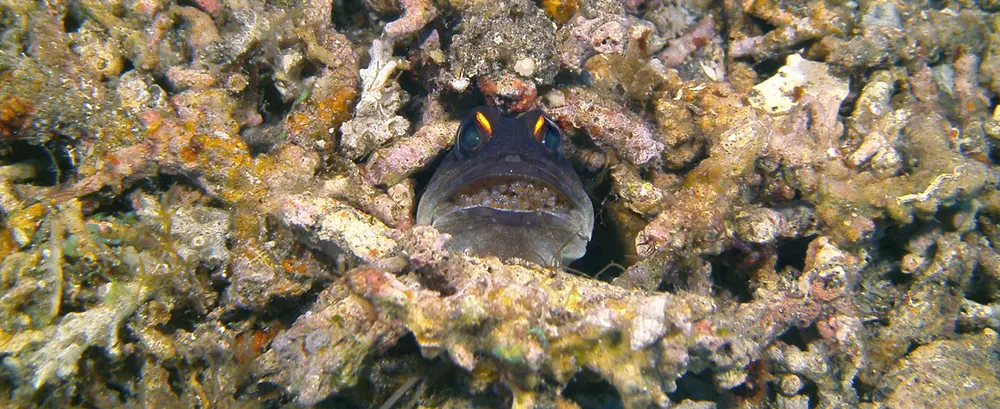One of the many awesome critters we have in Dauin – and even better, plenty on the Atmosphere Resorts house reef – is the jawfish.
There are roughly 40 species of jawfish, but one species, the Yellowbarred jawfish, is happy to call the our house reef its home. You can find a good number of these small fish (up to 10 cm) below the main reef in the rubble field between 10-15 meters depth. Although they are sometimes hard to spot, if you know where to look on our house reef, notably in round holes about an inch in diameter, you can see their little heads and upper bodies sticking out of their burrows. They actually construct these burrows themselves by scooping up a mouthful of sand and spitting it out, slowly enlarging their home-to-be into a nice, deep tunnel. Jawfish are very territorial around their burrows, although occasionally you can find one on top of another inside the same hole! Sometimes you can see them free-swimming, until you get too close, because when they sense danger or a bigger animal (like a diver) gets too close, jawfish will scurry back into their burrow, completely hidden from view.
A unique characteristic of jawfish is that they are mouth-brooders. If you are lucky, you can find a jawfish with a mouthful of eggs sticking out of its burrow.

Just like seahorses, male jawfish brood the eggs until they hatch, which takes about 8-10 days. They periodically rotate the egg mass which keeps all of the eggs clean and hydrated. The male jawfish cannot feed while brooding the eggs, so he will be underweight by the time the eggs hatch, ready to spend a solid amount of time feeding and recovering after his parental duties are complete. When diving around areas with rubble, keep your eyes open for a head poking out of the rubble and be patient. If a jawfish returns to its burrow, wait for a bit without moving and it should poke its head back out once it feels you aren’t a threat!
Your marine biologist /Daniel






